Dogumentor
Tenderfoot
You may want to question my sanity here as to why do I want to do such an infinity jet.....just get a proper gas powered dredge and be done. I will do my best reclaiming my sanity and explain, with lots of documentations ( as in Dogumentor ) how this came about.
) how this came about.
I kind of graduated from metal detecting (ML 5000) do river dredging/sluicing. I re located to Taiwan with an AP submersible sluice and headed to a spot where I have watched some locals sniping nuggets (diving goggles to 1m deep) from shallow water. There I tried that AP thingy, it is just not working, fills the riffle box with gravel and chucks everything right over it and out. It is also too bulky to operate in most of the places I want to use it.
In this river, there are tens of thousands of cracks and crevices, for a stretch of about 12 Km. The most natural gold trap made by nature. So I watch the guys snipping nuggets, and others do some panning the fine gold along its banks.....makes me think: The snipers miss all the fines.....
Prospecting regulations are a gray area where as long as you do not employ machinery (like gas powered dredge) they leave you alone.
So I cannibalized the battery and 24v bilge pump from the AP thingy and started to build my own. I settled on an infinity pump as this seemed more powerful. I realized the many shortcomings of such a set up and challenge my self to overcome them.
In a nut shell:
-as small a device as possible
-as unobtrusive as possible
-portability a must
-Infinity jet principle
-sub surface operated
-fluid bed gold trap( ?? )
The jet development can be followed here
Martin Zaugg
I got a good jet going, excellent suction, but my various gold traps just not work well. I suffer all the common problems. Now I had this new idea: Get rid of the material blockage with this ' fluidized bed' technology.
A few pics:
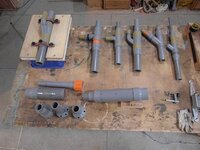
All the different jets I build, they all work, some better. I tested what is minimum and maximum size for my 24v 4700 gal/hr pump.
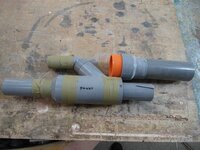
My favorite jet
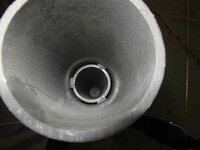
Jet inside
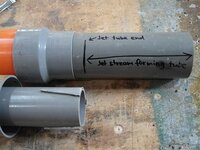
Do I really need such a long jet forming tube? Need to try out again.
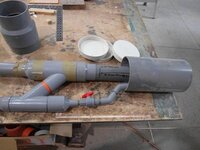
New Idea.....
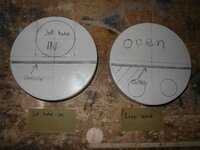
...something like that?
I am playing with a few more ideas and set-ups. Please give me your thoughts on this.
Thanks mate
Cheers all
Martin aka Dogumentor
 ) how this came about.
) how this came about.I kind of graduated from metal detecting (ML 5000) do river dredging/sluicing. I re located to Taiwan with an AP submersible sluice and headed to a spot where I have watched some locals sniping nuggets (diving goggles to 1m deep) from shallow water. There I tried that AP thingy, it is just not working, fills the riffle box with gravel and chucks everything right over it and out. It is also too bulky to operate in most of the places I want to use it.
In this river, there are tens of thousands of cracks and crevices, for a stretch of about 12 Km. The most natural gold trap made by nature. So I watch the guys snipping nuggets, and others do some panning the fine gold along its banks.....makes me think: The snipers miss all the fines.....
Prospecting regulations are a gray area where as long as you do not employ machinery (like gas powered dredge) they leave you alone.
So I cannibalized the battery and 24v bilge pump from the AP thingy and started to build my own. I settled on an infinity pump as this seemed more powerful. I realized the many shortcomings of such a set up and challenge my self to overcome them.
In a nut shell:
-as small a device as possible
-as unobtrusive as possible
-portability a must
-Infinity jet principle
-sub surface operated
-fluid bed gold trap( ?? )
The jet development can be followed here
Martin Zaugg
I got a good jet going, excellent suction, but my various gold traps just not work well. I suffer all the common problems. Now I had this new idea: Get rid of the material blockage with this ' fluidized bed' technology.
A few pics:

All the different jets I build, they all work, some better. I tested what is minimum and maximum size for my 24v 4700 gal/hr pump.

My favorite jet

Jet inside

Do I really need such a long jet forming tube? Need to try out again.

New Idea.....

...something like that?
I am playing with a few more ideas and set-ups. Please give me your thoughts on this.
Thanks mate
Cheers all
Martin aka Dogumentor
Last edited:



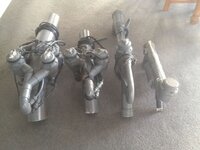
 Splitting positive, only lead acid?.. whohhhhh 36 -12 to get 24. Ohhh man!
Splitting positive, only lead acid?.. whohhhhh 36 -12 to get 24. Ohhh man!

